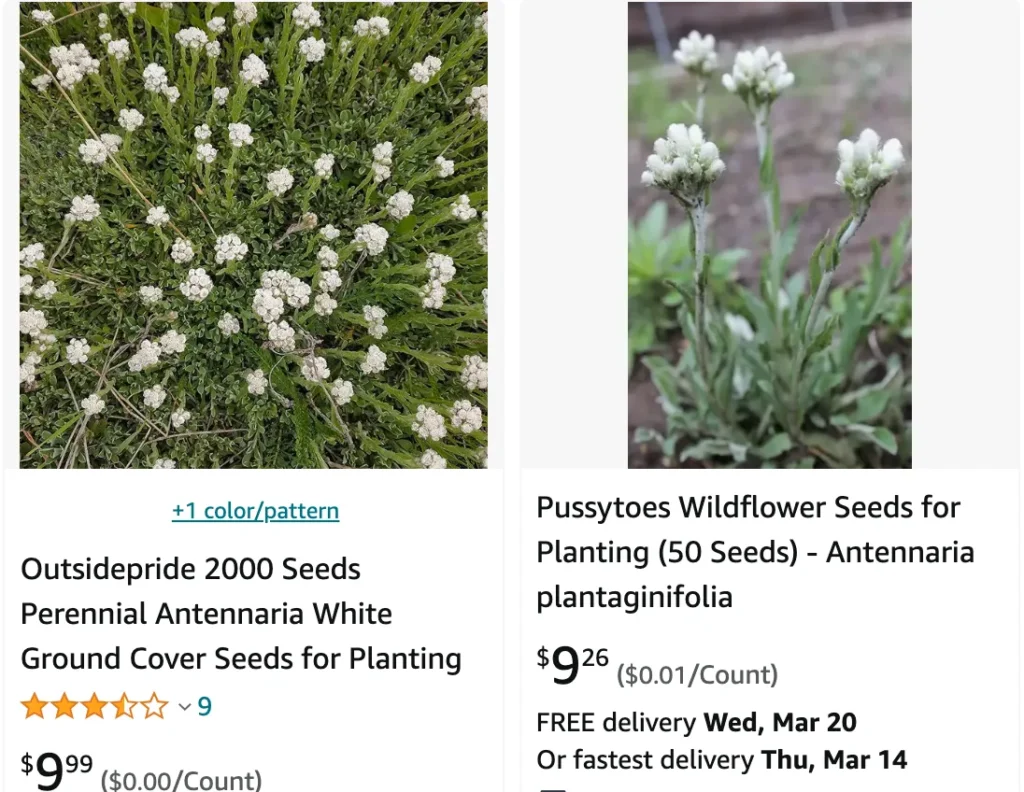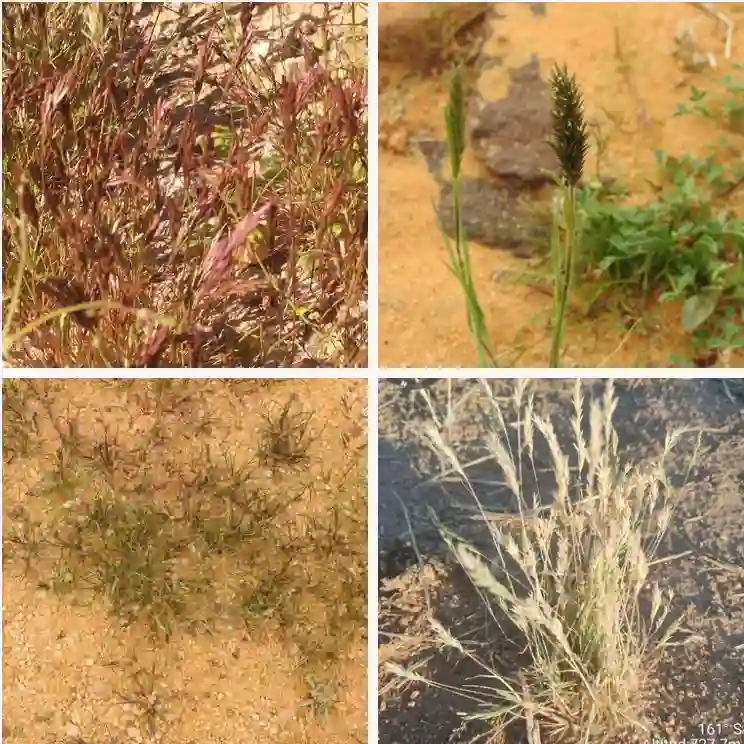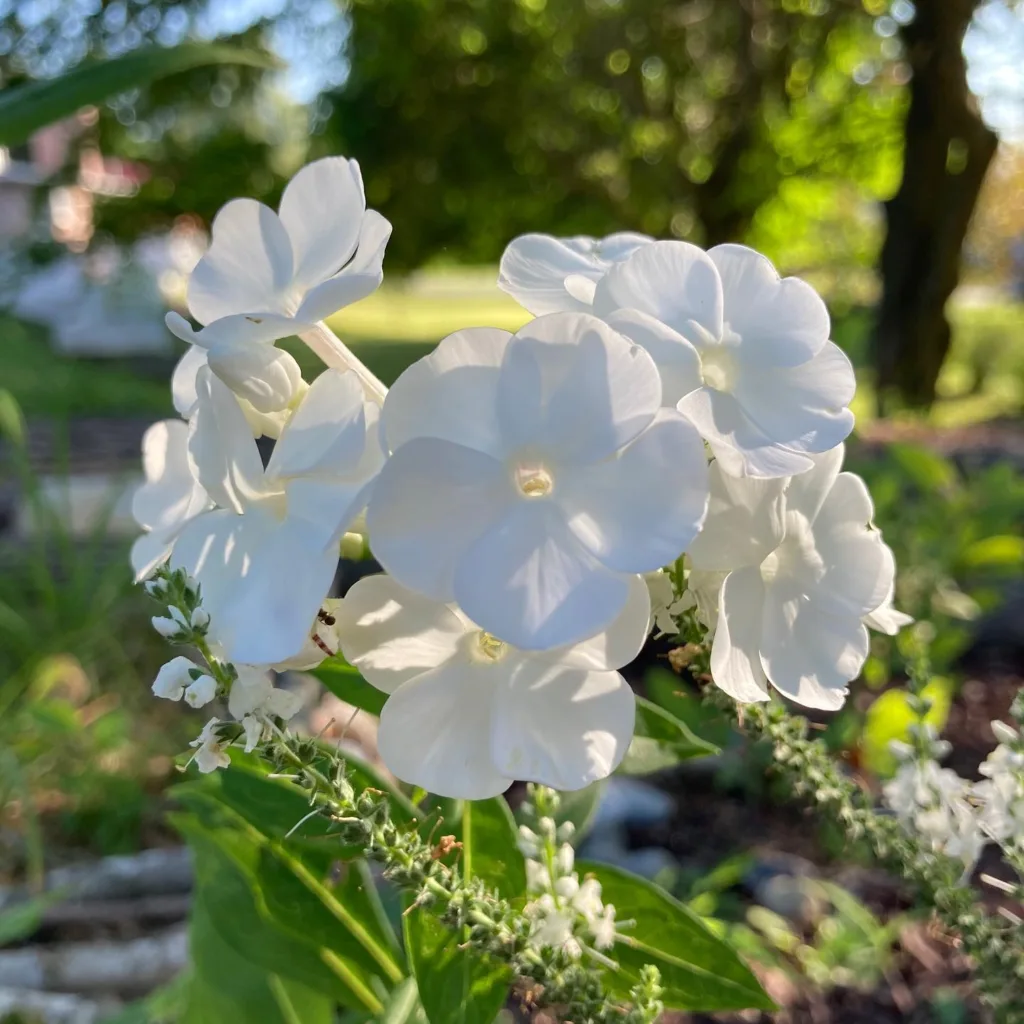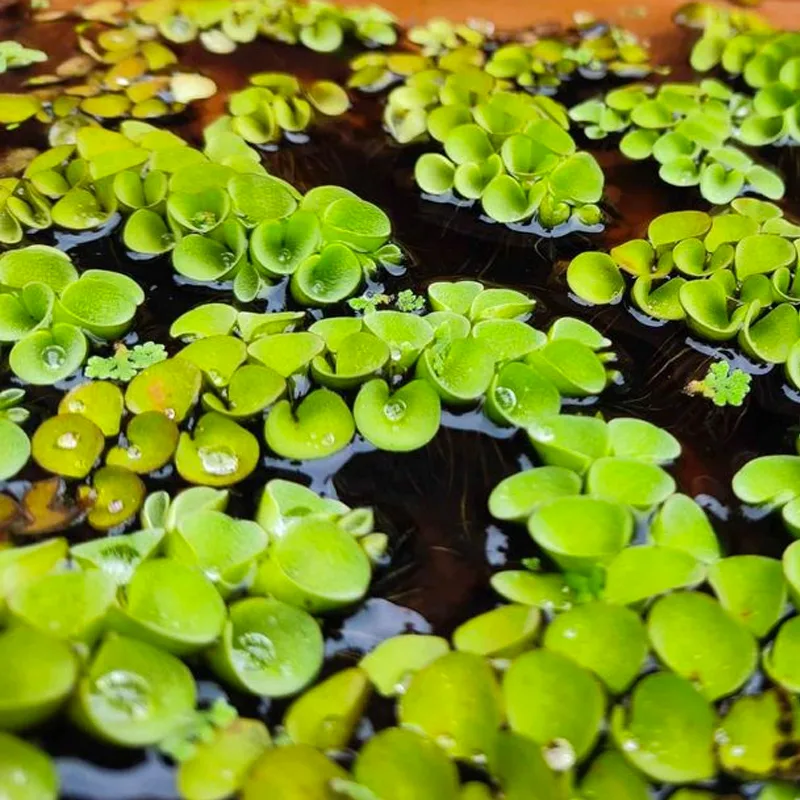
All About Antennaria Plantaginifolia
Hi everyone, Ferb Vu here! Today, we’re diving into the world of Antennaria plantaginifolia, a fascinating little perennial with a lot to offer. Often called Pussytoes, Plantain-Leaved Pussytoes, or Ladies’ Tobacco, this plant is a common sight in North American meadows and prairies.
Whether you’re a seasoned gardener or just starting your plant journey, there’s something for everyone in this Antennaria Plantaginifolia FAQ. Let’s get digging!
46 Species in Genus Antennaria
What is Antennaria Plantaginifolia?
Antennaria Plantaginifolia is a low-growing, herbaceous perennial native to eastern North America. It belongs to the Asteraceae family, sharing kinship with daisies and sunflowers. Known for its fuzzy, white flower heads and resemblance to a cat’s paw (hence the name Pussytoes), this little charmer adds a touch of whimsy to any garden.
How big does Antennaria Plantaginifolia grow?
This compact plant typically reaches heights of 1-3 inches, with a spread of 12-24 inches. It forms low-lying mats with basal rosettes of leaves, sending up slender flower stalks in the spring.
What kind of light does Antennaria Plantaginifolia need?
Antennaria Plantaginifolia thrives in full sun locations. It can tolerate some light shade, but flowering will be less prolific.
What kind of soil does Antennaria Plantaginifolia prefer?
This little trooper prefers well-drained, acidic soil. It’s a great choice for rock gardens or sandy areas where other plants might struggle.
How do I care for Antennaria Plantaginifolia?
Once established, Antennaria Plantaginifolia requires minimal care. Water deeply during prolonged dry spells, but otherwise, let the rain take care of things. Deadheading spent flowers can encourage additional blooms.
Is Antennaria Plantaginifolia winter hardy?
Absolutely! This tough plant is happy in USDA hardiness zones 3-8, meaning it can withstand cold winters with ease.
How does Antennaria Plantaginifolia propagate?
There are two main ways to propagate Antennaria Plantaginifolia: division and seed. Division is best done in spring or fall, where you can carefully separate clumps and replant them elsewhere. Seeds can be sown directly outdoors in fall or started indoors a few weeks before the last frost.
Can I grow Antennaria Plantaginifolia indoors?
While technically possible, Antennaria Plantaginifolia isn’t the best choice for container gardening. It prefers the well-draining conditions of an open garden bed.
What are some companion plants for Antennaria Plantaginifolia?
Due to its low-growing nature, Antennaria Plantaginifolia pairs well with taller perennials like Blazing Star (Liatris spicata) or Butterfly Milkweed (Asclepias tuberosa). It also complements ornamental grasses like Little Bluestem (Schizachyrium scoparium) for added textural interest.
Is Antennaria Plantaginifolia deer resistant?
Yes! The fuzzy foliage and mild toxicity of Antennaria Plantaginifolia deter deer and other browsing animals. This makes it a great choice for gardens where deer are a problem.
Can I use Antennaria Plantaginifolia for anything other than decoration?
Indigenous peoples in North America used Antennaria Plantaginifolia for various medicinal purposes. However, it’s important to note that this plant can be toxic if ingested in large quantities. Always consult with a qualified herbalist before using any plant medicinally.
What are the differences between Antennaria Plantaginifolia and Antennaria Neglecta?
These two species are very similar, and distinguishing them can be tricky. Often, leaf size and shape are the key identifiers. Antennaria Plantaginifolia tends to have broader, more rounded leaves compared to the narrower, more pointed leaves of Antennaria Neglecta.
I already have Yarrow (Achillea millefolium) in my garden. How does Antennaria Plantaginifolia compare?
Both Yarrow and Antennaria Plantaginifolia are sun-loving perennials that offer long-lasting blooms. However, Yarrow typically grows taller (up to 3 feet) and boasts flat flower clusters in various colors. Antennaria Plantaginifolia remains compact and has fuzzy, white flower heads. They can coexist beautifully in a sunny border, offering contrasting textures and bloom times.
There you have it! With its charming looks, ease of care, and deer resistance, Antennaria Plantaginifolia is a fantastic addition to any garden. So, if you’re looking for a low-maintenance perennial that adds a touch
If i die, water my plants!



